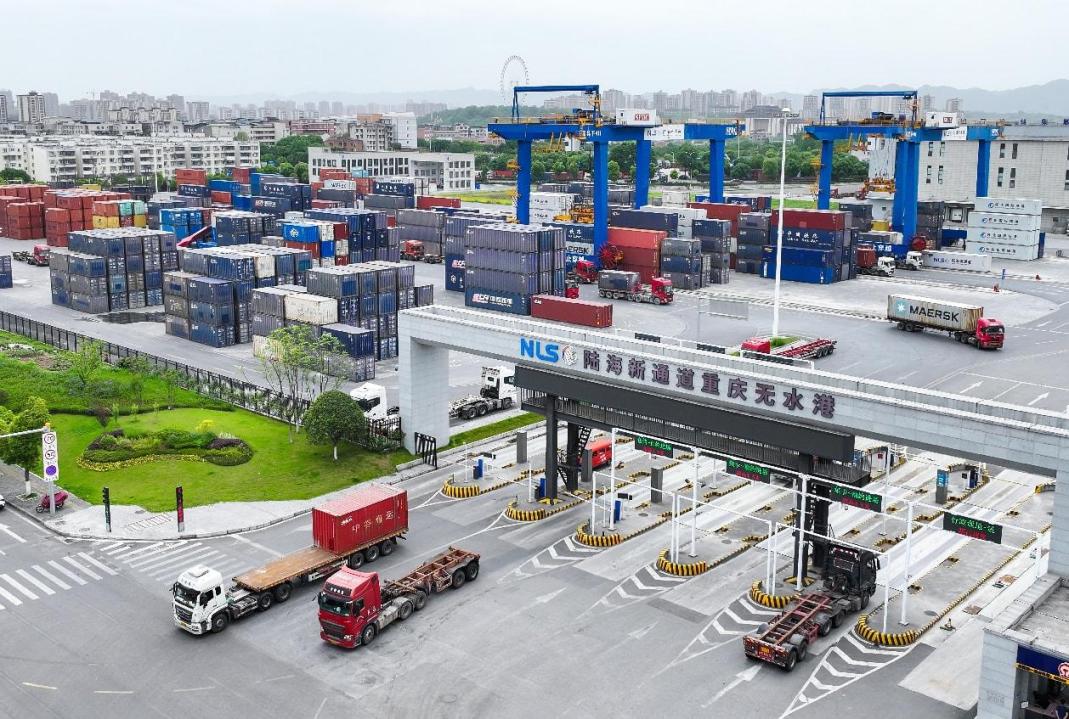Cross-border journey of oranges reflects China's expanding opening-up

Workers sort oranges at an agricultural company in Yichang, central China's Hubei province. (Photo/Zhou Chongyu)
At 5 a.m., morning mist still blanketed the citrus orchards in Yiling district of Yichang, central China's Hubei province. Farmers carefully picked oranges, sorted them, attached traceable export tags, and loaded the fruit onto refrigerated trucks.
Two days later, the trucks arrived at the Horgos highway port on the China-Kazakhstan border, where a "green channel" expedited customs clearance for agricultural products. By noon, the fresh, high-quality oranges were delivered to a distribution center in Almaty, Kazakhstan.
This cross-border journey vividly illustrates how China's inland regions are advancing toward the forefront of opening up. According to China's General Administration of Customs, in 2024, the total import and export volume of China's western region exceeded 4 trillion yuan ($561.68 billion) for the first time, accounting for 9.2 percent of the country's total foreign trade. In the first three quarters of this year, trade from the western region reached 3.21 trillion yuan, up 10.2 percent year on year.
The transformation of China's inland regions represents more than a geographical breakthrough but a profound shift in development philosophy and economic growth models. By leveraging corridor-based connectivity, fostering coordinated regional development and adopting innovative approaches, these regions are becoming key engines of China's broader opening-up agenda.
Expanding international logistics corridors broadens the landscape of opening up
While coastal provinces have traditionally driven China's export growth, the rise of international logistics corridors is enabling inland areas to connect directly with global markets by both land and sea. These developments are helping integrate inland hubs into China's high-standard opening-up framework and creating stronger linkages between the eastern and western regions.
For instance, the Yellow River Land-Sea Corridor connects nine provinces and autonomous regions, facilitating the transport of engineering equipment, machinery, and agricultural products to international ports. Similarly, the New International Land-Sea Trade Corridor links the Silk Road Economic Belt with the Yangtze River Economic Belt, enabling high-quality goods from central and western China to reach Southeast Asian markets efficiently.
According to customs data, in the first three quarters of 2024, trade through the New International Land-Sea Trade Corridor totaled 611.5 billion yuan, up 19.3 percent year on year, contributing 3.4 percentage points to the overall growth of foreign trade in the western region.

Workers manufacture fishing gear at an outdoor sports equipment company in Shule county, Kashgar, northwest China's Xinjiang Uygur autonomous region. (Photo from the WeChat official account of the media center of Shule county)
Industrial synergy drives coordinated regional development
Improved logistics infrastructure is facilitating the smooth flow of industrial and supply chains, allowing inland regions to transform local challenges into competitive advantages. These regions are now attracting industrial transfers and upgrading their economic structure.
In the comprehensive bonded zone of Horgos in northwest China's Xinjiang Uygur autonomous region, a fur clothing company from Hebei province in north China has established a full-service industrial platform, attracting both enterprises and technical experts from the east to train local workers, thus anchoring a new industry in a border area.
Meanwhile, in Shule county, Kashgar, Xinjiang, a fishing gear company from east China's Shandong province has established a production base for outdoor sports equipment. With 13 upstream and downstream enterprises now operating in the cluster, the base has created jobs for more than 2,700 local residents. Products such as high-end carbon fiber fishing rods, bicycles, and fishing platforms are being exported to Europe, the United States, Japan, and South Korea. These industrial upgrades, fueled by modern logistics, are injecting vitality into the inland economy and promoting more balanced regional development.

Photo shows a land port of the New International Land-Sea Trade Corridor in southwest China's Chongqing municipality. (Photo/Guo Jin)
Institutional reform and innovation improve the business environment
Logistics and industrial growth are underpinned by continuous improvements to the institutional environment. This year, China's General Administration of Customs, together with 20 other departments and institutions, launched a special action to facilitate cross-border trade. Targeted policy measures have accelerated customs clearance and improved logistical efficiency.
From the western border regions to the inland heartland, a rapidly expanding network of international logistics corridors is redefining China's opening-up landscape, driving industrial transformation and promoting deeper integration into global trade.
Photos
Related Stories
- South African fruit traders actively stock up on fruit for export to China
- Shanghai's foreign trade up 5.4 pct in Jan.-Sept.
- China's foreign trade sees high-quality growth despite headwinds, brings opportunities to world
- China's foreign trade up 4 pct in first 9 months
- Xinjiang land port starts 24/7 operations to boost trade with Central Asia
Copyright © 2025 People's Daily Online. All Rights Reserved.









